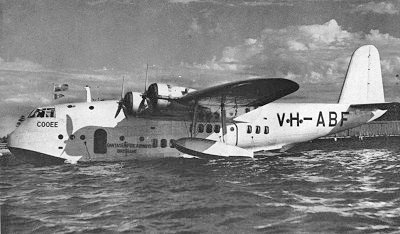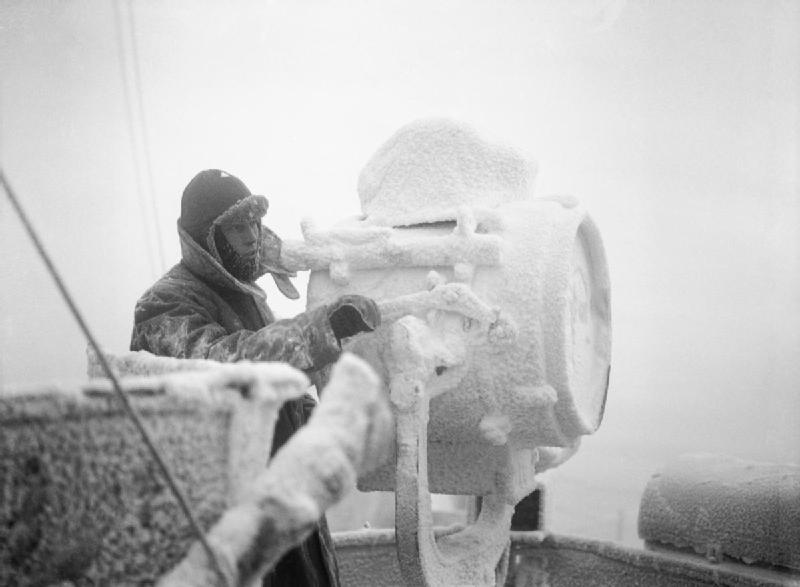|
No. 330 Squadron RNoAF
No. 330 Squadron RNoAF () is a military helicopter, helicopter unit of the Royal Norwegian Air Force (RNoAF) and is Norway's military search and rescue service. The squadron operates sixteen AgustaWestland AW101, AugustaWestland AW101 helicopters based at six military airbase, airbases along the coast. Headquartered at Sola Air Station, the squadron (aviation), squadron has detachment (military), detachments at Rygge Air Station, Rygge, Florø Airport, Florø, Ørland Main Air Station, Ørland, Bodø Main Air Station, Bodø and Station Group Banak, Banak. The unit's primary duty is search and rescue (SAR), with secondary duties consisting of air ambulance and disaster relief. The squadron has its roots in the No. 330 Squadron RAF, which conducted maritime surveillance, Arctic convoys of World War II, Arctic convoy escort and anti-submarine warfare during the Second World War. It was established on Iceland on 25 April 1941, where it operated Northrop N-3PB and Consolidated PBY Cat ... [...More Info...] [...Related Items...] OR: [Wikipedia] [Google] [Baidu] |
Royal Norwegian Air Force
The Royal Norwegian Air Force (RNoAF) () is the air force of Norway. It was established as a separate arm of the Norwegian Armed Forces on 10 November 1944. The RNoAF's peacetime establishment is approximately 2,430 employees (officers, enlisted staff and civilians). 600 personnel also serve their draft period in the RNoAF. After mobilization, the RNoAF would consist of approximately 5,500 personnel. The infrastructure of the RNoAF includes seven airbases (at Ørland Main Air Station, Ørland, Rygge Air Station, Rygge, Andøya Air Station, Andøya, Evenes Air Station, Evenes, Bardufoss Air Station, Bardufoss, Bodø Main Air Station, Bodø, and Gardermoen Air Station, Gardermoen). It also has one control and reporting centre (in Sørreisa Municipality) and three training centres: Værnes in Stjørdal Municipality (about northeast of Trondheim (city), Trondheim), Kjevik in Kristiansand Municipality, and at KNM Harald Haarfagre/Hafrsfjord, Madlaleiren in Stavanger Municipality. Hi ... [...More Info...] [...Related Items...] OR: [Wikipedia] [Google] [Baidu] |
Ørland Main Air Station
Ørland Main Air Station (Norwegian: Ørland hovedflystasjon) is situated at the mouth of the Trondheimsfjorden in Ørland Municipality in Trøndelag county in the center of Norway. Ørland is operated by the Royal Norwegian Air Force and is an important air base not only for Norway, but also for NATO. The air station is the base of F-35A Lightning II, AgustaWestland AW101 search and rescue helicopters and a location for E-3A ''Sentry'' AWACS. It is also the host of many NATO exercises. Operations Air Wing 132 is stationed at the main air station. Under it are most operations at the air station, including 331 Squadron, 332 Squadron, air defence squadron, base defence battalion, maintenance- and logistics units. Other units represented are 330 Squadron (SAR helicopters), Cyber Defence Force and Defence Logistics Organization. Ørland is the only air station on the Scandinavian Peninsula that has ground handling equipment for the E-3A Sentry AWACS (Airborne Warning and C ... [...More Info...] [...Related Items...] OR: [Wikipedia] [Google] [Baidu] |
Gardermoen Air Station
Station Group Gardermoen (Norwegian: Gardermoen flystasjon) is located about 50 km north of Oslo, Norway. It is colocated with Norway's main airport, Oslo Airport, Gardermoen. 335 Squadron and 717 Squadron of the Royal Norwegian Air Force are stationed at Gardermoen, which operates respectively C-130J-30 ''Super Hercules'' transport aircraft and Dassault Falcon 20 electronic warfare aircraft. History The Norwegian Army started using Gardermoen as a camp already in 1740, when it was called Fredericksfeldt. The first flight took place in 1912, and by 1920 there were multiple hangars at the airport. During the German invasion of Norway in World War II the Germans bombed the airport, but built it up with two 2000-meter runways during the war. The military airport was founded on December 1, 1996, with new installations for 1,2 billion NOK. The airfield is built to easily expand cheaply and fast whenever needed. On October 8, 1998 the main airport serving Oslo was moved fro ... [...More Info...] [...Related Items...] OR: [Wikipedia] [Google] [Baidu] |
Airline
An airline is a company that provides civil aviation, air transport services for traveling passengers or freight (cargo). Airlines use aircraft to supply these services and may form partnerships or Airline alliance, alliances with other airlines for codeshare agreements, in which they both offer and operate the same flight. Generally, airline companies are recognized with an Air operator's certificate, air operating certificate or license issued by a governmental aviation body. Airlines may be scheduled or Air charter, charter operators. The List of airlines by foundation date, first airline was the German airship company DELAG, founded on November 16, 1909. The four oldest non-airship airlines that still exist are the Netherlands' KLM (1919), Colombia's Avianca (1919), Australia's Qantas (1920) and the Russian Aeroflot (1923). Airline ownership has seen a shift from mostly personal ownership until the 1930s to government-ownership of major airlines from the 1940s to 1980s and b ... [...More Info...] [...Related Items...] OR: [Wikipedia] [Google] [Baidu] |
Flying Boat
A flying boat is a type of seaplane with a hull, allowing it to land on water. It differs from a floatplane in having a fuselage that is purpose-designed for flotation, while floatplanes rely on fuselage-mounted floats for buoyancy. Though a flying boat’s fuselage provides buoyancy, it may also utilize under-wing floats or wing-like hull projections (called sponsons) for additional stability. Ascending into common use during the First World War, flying boats rapidly grew in both scale and capability during the interwar period, during which time numerous operators found commercial success with the type. Flying boats were some of the largest aircraft of the first half of the 20th century, exceeded in size only by bombers developed during the Second World War. Their advantage lay in using water instead of expensive land-based runways, making them the basis for international airlines in the interwar period. They were also commonly used as maritime patrol aircraft and air-s ... [...More Info...] [...Related Items...] OR: [Wikipedia] [Google] [Baidu] |
RAF Oban
RAF Oban is a former Royal Air Force (RAF) flying boat base located at the northern end of the island of Kerrera, in Ardantrive Bay west of Oban, Argyll and Bute, Scotland during the Second World War. History Oban was surveyed by the RAF in the 1930s as a suitable base for flying boat operations. A fuel depot was set up on the island of Kerrera while No. 209 Squadron RAF began utilising the facilities operating the Supermarine Stranraer flying-boat in October 1939. An aircraft servicing area, new slip and jetty were constructed on the island. The base became operational in September 1938, with headquarters at Dungallan House, Oban. No. 209 Squadron re-equipped with Saro Lerwick flying-boats were based at RAF Oban. Aircrew based at RAF Oban were billeted in the main seafront hotels at Oban. No. 210 Squadron RAF equipped with the Short Sunderland replaced No. 209 Squadron in July 1940. Anti submarine patrols, convoy escorts as part of 18 Group Coastal Command and ferry servi ... [...More Info...] [...Related Items...] OR: [Wikipedia] [Google] [Baidu] |
Second World War
World War II or the Second World War (1 September 1939 – 2 September 1945) was a World war, global conflict between two coalitions: the Allies of World War II, Allies and the Axis powers. World War II by country, Nearly all of the world's countries participated, with many nations mobilising all resources in pursuit of total war. Tanks in World War II, Tanks and Air warfare of World War II, aircraft played major roles, enabling the strategic bombing of cities and delivery of the Atomic bombings of Hiroshima and Nagasaki, first and only nuclear weapons ever used in war. World War II is the List of wars by death toll, deadliest conflict in history, causing World War II casualties, the death of 70 to 85 million people, more than half of whom were civilians. Millions died in genocides, including the Holocaust, and by massacres, starvation, and disease. After the Allied victory, Allied-occupied Germany, Germany, Allied-occupied Austria, Austria, Occupation of Japan, Japan, a ... [...More Info...] [...Related Items...] OR: [Wikipedia] [Google] [Baidu] |
Anti-submarine Warfare
Anti-submarine warfare (ASW, or in the older form A/S) is a branch of underwater warfare that uses surface warships, aircraft, submarines, or other platforms, to find, track, and deter, damage, or destroy enemy submarines. Such operations are typically carried out to protect friendly shipping and coastal facilities from submarine attacks and to overcome blockades. Successful ASW operations typically involve a combination of sensor and weapon technologies, along with effective deployment strategies and sufficiently trained personnel. Typically, sophisticated sonar equipment is used for first detecting, then classifying, locating, and tracking a target submarine. Sensors are therefore a key element of ASW. Common weapons for attacking submarines include torpedoes and naval mines, which can both be launched from an array of air, surface, and underwater platforms. ASW capabilities are often considered of significant strategic importance, particularly following provocative instanc ... [...More Info...] [...Related Items...] OR: [Wikipedia] [Google] [Baidu] |
Arctic Convoys Of World War II
The Arctic convoys of World War II were oceangoing convoys which sailed from the United Kingdom, Iceland, and North America to northern ports in the Soviet Union – primarily Arkhangelsk (Archangel) and Murmansk in Russia. There were 78 convoys between August 1941 and May 1945, sailing via several seas of the Atlantic Ocean, Atlantic and Arctic Ocean, Arctic oceans, with periods with no sailings during several months in 1942, and in the summers of 1943 and 1944. About 1,400 merchant ships delivered essential supplies to the Soviet Union under the Anglo-Soviet Agreement and US Lend-Lease program, escorted by ships of the Royal Navy, Royal Canadian Navy, and the U.S. Navy. Eighty-five merchant vessels and 16 Royal Navy warships (two cruisers, six destroyers, eight other escort ships) were lost. Nazi Germany's ''Kriegsmarine'' lost a number of vessels including German battleship Scharnhorst, one battleship, three destroyers, 30 U-boats, and many aircraft. The convoys demonstrated ... [...More Info...] [...Related Items...] OR: [Wikipedia] [Google] [Baidu] |
Maritime Surveillance
Maritime patrol or maritime reconnaissance is the task of monitoring areas of water. Generally conducted by military and law enforcement agencies, maritime patrol is usually aimed at identifying human activities. Maritime patrol refers to active patrol of an area, as opposed to passive monitoring systems such as sound-detection fixtures or land-based spotters. A patrol consists of a ship, submarine, aircraft or satellite examining the patrolled area and seeking out activities to be identified and reported. Maritime patrol is critical in wartime situations for navies to locate enemy forces to engage or defend against. Peacetime patrols are important for interdiction of criminal activities and for ensuring legal use of waters. Maritime patrols can be conducted by surface ships and submarines, by aircraft (e.g. MPA) and other aerial vehicles, and even by satellites. Human spotting remains an important part of detecting activity, but increasingly electronic systems are used. Type ... [...More Info...] [...Related Items...] OR: [Wikipedia] [Google] [Baidu] |
Disaster Relief
Emergency management (also Disaster management) is a science and a system charged with creating the framework within which communities reduce vulnerability to hazards and cope with disasters. Emergency management, despite its name, does not actually focus on the management of emergencies; emergencies can be understood as minor events with limited impacts and are managed through the day-to-day functions of a community. Instead, emergency management focuses on the management of disasters, which are events that produce more impacts than a community can handle on its own. The management of disasters tends to require some combination of activity from individuals and households, organizations, local, and/or higher levels of government. Although many different terminologies exist globally, the activities of emergency management can be generally categorized into preparedness, response, mitigation, and recovery, although other terms such as disaster risk reduction and prevention are also ... [...More Info...] [...Related Items...] OR: [Wikipedia] [Google] [Baidu] |






